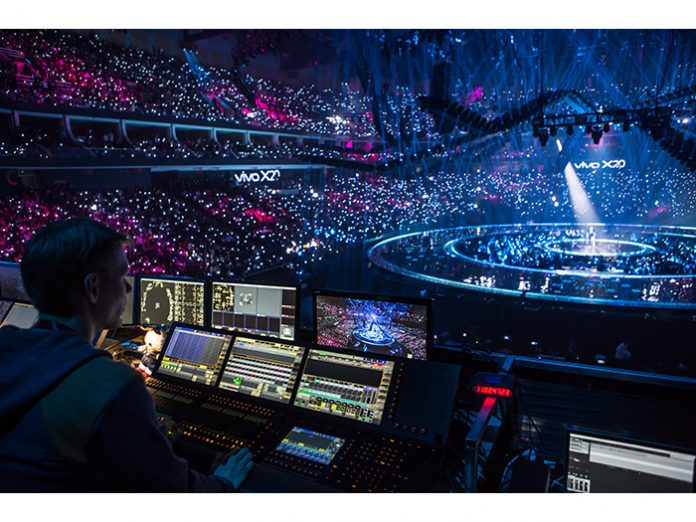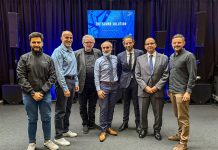Dutch lighting and video creative company, Light Image, took the Visual Productions’ TimeCore to China for the end 2017 / 2018 New Year celebrations, live from Guangzhou International Sports Arena, China.
The TimeCore is a timecode toolbox. it is a compact device that can perform all tasks related to timecode. It can generate, follow, convert and display timecode supporting SMPTE, MTC and Art-Net timecode. It can convert between any of these protocols as well as converting between different frame rates. The TimeCore has an impressive show controller where it can even handle a number of non-timecode protocols including sACN, Art-Net, OSC, UDP, TCP and HTTP, as well as MIDI, MMC, MSC, RTP-MIDI.
Light Image reported back on the spectacular project in Guangzhou: Our team of video creatives has been counting down to 2018 in Guangzhou working on this massive television production in China for hundreds of millions viewers – making it one of the most watched broadcasts world-wide.
The facts:
- 3 video designers working on designs for over 48 performances
- Multiple interactive content scenes teaming up with BlackTrax Real-time Tracking by CAST Software, provided by our friends of Switch Concepts / DutchRigger, connected by our MotionMatrix software
- 6x GRPH Media Servers rendering all content live using over 180 2D & 3D layers for the 36m diameter (7600×7600 pixels) LED floor ring and the impressive spider roof object
- 2x MA Lighting International GrandMA2 full-size controlling our GRPH Media Servers with over 7200 parameters, allowing our video operators to work simultaneously on the show in one session
- Visual Productions BV TimeCore providing Art-Net timecode for the GRPH Media Servers, LTC for the GrandMA2 and feeding several timecode displays on our FOH, allowing us to quickly change between programming timecode and live timecode.
Specifier and programmer for the TimeCore was Jeroen van der Velden. He was delighted to share his experience of using the TimeCore in this project: “The Timecore allowed us to create one solid timecode infrastructure to all media servers and MA2 consoles controlling video. During rehearsals, we could simply switch timecode to all those slaves between the external main LTC timecode source, and the multiple MacBooks on our own network running audio software with rehearsal-files. This made our programming and rehearsal time way more efficient, and made the timecode infrastructure simple and solid. It’s amazing to have a classic LTC and MTC interface combined with all ethernet protocols like Art-net Timecode, in one unit.”





